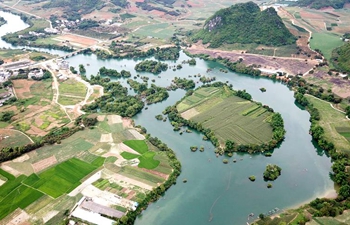 ?
?
A member of Estonian Police and Border Guard takes part in rescue operation and chemicals decontamination exercise at the Seaplane harbour in Tallinn, capital of Estonia, on June 5, 2018. The exercise is one of the events of the 9th annual forum of the EU Strategy for the Baltic Sea Region (EUSBSR) taking place here from 4 to 5 June, which aims to tackle on development and marine environment protection of the Baltic Sea Region.(Xinhua/Guo Chunju)
TALLINN, June 5 (Xinhua) -- Forums on the Baltic Sea Region highlighted the EU Cohesion Policy and the EU Strategy for the region facing future challenges, with a live demonstration of a rescue operation for marine environment on Tuesday.
The event at the Seaplane harbour in Tallinn, capital of Estonia, unfolded as a short demonstration of how joint international exercises can improve countries' preparedness for all sorts of hazards and prevent loss of lives and money, said the organizer.
The exercise is one of the events of the 9th annual forum of the EU Strategy for the Baltic Sea Region (EUSBSR) from June 4 to June 5 after the 20th Baltic Development Forum Summit on Monday.
Opening the EUSBSR forum, Estonian Prime Minister Juri Ratas pledged to improve the standard of living and safety of people, adding "that is what we are striving for together and the reason for realizing our joint major projects".
Latvian Prime Minister Maris Kucinskis, Lithuanian Prime Minister Saulius Skvernelis and Polish Foreign Minister Jacek Czaputowicz also addressed the forum audience after a joint meeting with Ratas on synchronizing the Baltic electricity systems with Europe, the prospects for funding Rail Baltic and the upcoming NATO summit in July.
Meanwhile, the Baltic Development Forum released a report looking closer into how the countries in the Region are coming to grips with the development of a more flexible Europe.
The report, called "The Baltic Sea Region Economies: Progress and Priorities: A 20 Year Perspective", examines the region's performance and policy integration, identifies potentials and challenges, and suggests concrete action for the future.















